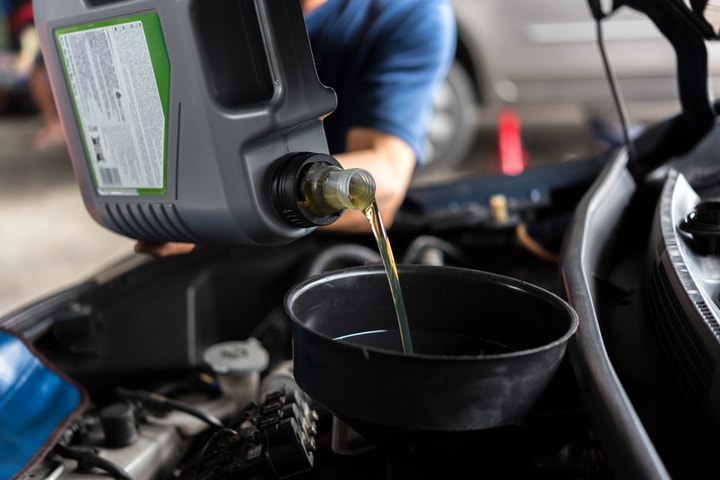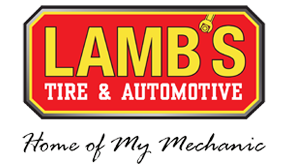Expert Advice From The Oil Change Pros in Austin

Your engine’s oil plays a critical role in your vehicle being able to run at all. That’s why it is important for the oil running through your engine to be clean, so it can perform its job effectively. Motor oil does not last forever which is why a regular oil change should definitely be part of your vehicle’s preventative maintenance routine.
When it comes to motor oil and oil change service, there are a few things the experts would suggest you keep in mind. So, we put together some words of wisdom from the pros here at Lamb’s Tire & Automotive that can help both your engine oil and your vehicle perform optimally:
Stick to the Recommended Oil Change Schedule
The recommended oil change service schedule is not just a random number that can be ignored. Not sticking to the recommended interval can have dire consequences on the performance and life of your engine.
Several things can happen if your vehicle is overdue for an oil change:
- Your oil filter can become clogged, forcing sludge back through the engine.
- You can experience reduced gas mileage and reduced horsepower.
- Your engine may have to work harder, possibly overheating internal engine components.
- Components within the engine can become warped or excessively worn down.
- Your engine can overheat and/or completely seize up.
Plus, if your vehicle is still under warranty, having regular oil changes performed may be required to maintain warranty coverage. No matter if your recommended oil change interval is every 3,000 miles or 7,000 miles, be sure to stick to that routine for the best engine performance.
Make Sure Your Engine is Running the Proper Oil
Not all motor oil is created equal. So it is important that you are using the best oil for your vehicle’s engine. Doing so can help ensure that the oil can properly lubricate, clean, and protect your engine’s components and help extend the life of your vehicle.
However, it’s important that you first understand the differences between the types of motor oil available:
- Conventional - Often referred to as “standard oil”, this is a crude mineral oil that is completely natural and only partially refined to improve its viscosity. It is the least refined type of oil.
- Full-Synthetic - Synthetic oil is made entirely in a lab or factory, is highly refined, and includes the best elements of oil and additives to provide the highest level of performance and engine protection.
- Synthetic Blend - Synthetic blend oil is a mixture of both conventional and full-synthetic oil. This oil can offer high performance and better engine protection than just conventional oil, but not as much as full-synthetic.
- High-Mileage - Similar to synthetic blend oil, this oil is specifically created for engines that have over 75,000 miles. It contains specialized additives for older engines, providing the extra protection and performance needed, while also preventing oil evaporation.
So when it comes to using the proper oil, you can see that, for example, running regular conventional oil in an engine that has 100,000 miles is not going to give it the proper protection that it needs. Also, some vehicles require synthetic oil. Sure, you may save money initially during the oil change service by going with a lesser oil, but could result in more costly engine repairs in the long run.
Check your vehicle’s owner’s manual and consult with our oil change technicians to determine what the best motor oil should be for your engine.
Leave Oil Changes to the Professionals
Sure, you could technically do the oil change yourself. But, there’s too much room for error, which explains why this maintenance service is best left up to the professionals. For starters:
- It will be done correctly - Letting a professional perform your oil change means it will be done correctly. Doing it yourself leaves room for the chance that the oil filter may not be installed properly, you may get the wrong filter, the wrong oil, or even miss oil leaks. At an auto shop, you can be confident it will be done right.
- It will be much safer - Taking your vehicle to an auto shop for an oil change will be much safer. When trying to do it yourself, there is always a chance that something unpredictable can happen such as getting burned by hot oil or becoming pinned under the car. Plus, for the safety of the environment, the old oil must be properly disposed of.
- It will be more convenient - Performing an oil change yourself is a time-consuming task that can get pretty dirty. The technicians at an auto service center can do it for you quickly and get you back on the road faster. Plus, they already have all the necessary materials and it will often cost roughly the same as doing it yourself.
- You’ll get the extra perks - When you take your vehicle in for routine maintenance like an oil change, you’ll usually also get a couple of other helpful services that can also be done much faster than you trying to do them yourself. This will include things like a tire rotation or topping off your vehicle’s other fluids.
Schedule your oil change appointment online today
Check Your Oil Regularly
One of the best ways to keep your engine running smoothly is to check the oil level at least once a month. You should also check it before going on a long road trip.
Many newer vehicles have built-in oil level sensors, making it easy to always keep an eye on the level. But if your vehicle does not have this (and to check the oil’s quality), you’ll need to manually check it using the oil dipstick.
To do this, just follow these simple steps:
- Make sure your vehicle is parked on level ground and the engine has been off for at least 10-15 minutes.
- With the engine off, open the hood and find the oil dipstick. It will usually have a yellow, orange, or red plastic ring or tab. Your vehicle owner’s manual will also show exactly where it’s at.
- Remove the dipstick and wipe it from handle to tip with a clean paper towel or rag.
- Reinsert the clean dipstick all the way back in, wait for a second, and then slowly pull it back out.
- Look at the end of the dipstick for the oil level indicator lines and see where the oil level falls in that range on both sides. You’ll see “MIN” and “MAX” markings or the letters “L” and “H” (low and high).
- Also, look on the stick at the color and consistency of the oil. This will help determine the oil's current effectiveness. If it is thick, black, gritty, or milky, it is probably time for an oil change.
- Wipe the dipstick off again and fully reinsert it back into its tube and close the hood.
If you’ve discovered that your oil level is low or is leaking, bring your vehicle to your closest Lamb’s Tire & Automotive location ASAP.
Trust the Local Experts at Lamb’s Tire & Automotive
As you can see, clean motor oil is a vital component of your engine. One that is best left under the care of professionals. If you’re looking for an oil change in Austin and surrounding areas, you can trust the ASE-certified master technicians here at Lamb’s Tire & Automotive.
Drivers throughout Texas trust our team for expert vehicle maintenance and repair work, unmatched customer service, and affordable prices.
Check out our latest oil change coupons to help save even more money and schedule your appointment today!









